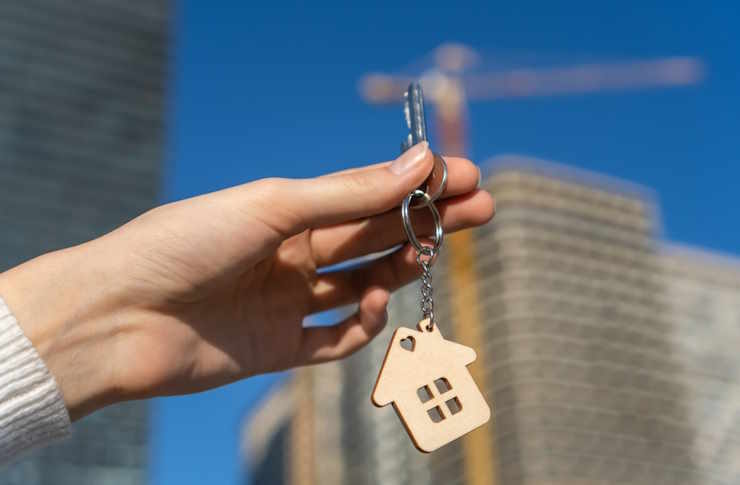What You Need to Know About Prefabricated Homes
Prefabricated homes, also known as prefab homes, have gained significant popularity in recent years as a quick and efficient housing solution. These homes are manufactured off-site in a factory setting and then transported to the final location for assembly. This modern approach to homebuilding offers numerous benefits, from reduced construction time to improved quality control. In this article, we'll explore the key aspects of prefabricated homes, their features, and why they might be an excellent option for various homeowners, including seniors.

What are the main benefits of prefabricated homes?
One of the primary advantages of prefabricated homes is their rapid construction time. Unlike traditional homes that can take months or even years to build, prefab homes can be completed in a matter of weeks. This quick turnaround is particularly beneficial for those who need housing solutions urgently or want to avoid the lengthy process of conventional construction.
Another significant benefit is the controlled environment in which prefab homes are built. Factory settings allow for precise quality control, reducing the risk of weather-related delays and ensuring consistent standards throughout the construction process. This controlled environment also minimizes waste and often results in a more energy-efficient final product.
How do prefabricated homes compare to traditional construction?
While traditional homes are built entirely on-site, prefabricated homes are constructed in sections within a factory and then assembled on location. This difference in approach leads to several advantages for prefab homes. They often have lower construction costs due to streamlined processes and bulk material purchasing. Additionally, prefab homes can be more environmentally friendly, as the factory setting allows for better resource management and reduced waste.
However, it’s important to note that prefab homes may have limitations in terms of customization compared to traditional builds. While many manufacturers offer a range of design options, the level of personalization may not match that of a fully custom-built home.
What features make prefabricated homes comfortable for living?
Modern prefabricated homes are designed with comfort and livability in mind. Many come equipped with high-quality insulation, ensuring excellent temperature control and energy efficiency. Open floor plans are common in prefab designs, creating a sense of spaciousness and allowing for flexible use of living areas.
Advanced building materials and techniques often result in homes that are sturdy and durable. Many prefab homes also incorporate smart home technology, allowing for easy integration of automation systems for lighting, heating, and security.
Are prefabricated homes suitable for seniors?
Prefabricated homes can be an excellent option for seniors looking for comfortable and convenient living spaces. Many prefab designs prioritize accessibility, with features such as single-story layouts, wide doorways, and zero-step entries. These elements make it easier for seniors with mobility issues to navigate their homes safely.
Additionally, the quick construction time of prefab homes can be particularly advantageous for seniors who need to downsize or relocate quickly. The ability to customize certain aspects of the design also allows for the incorporation of specific features that cater to the needs of older adults, such as grab bars in bathrooms or lower countertops in kitchens.
What are some unique aspects of prefabricated homes in today’s market?
One interesting trend in the prefab home market is the focus on sustainability. Many manufacturers are incorporating eco-friendly materials and energy-efficient systems into their designs. Some prefab homes even come with solar panel installations or rainwater harvesting systems, appealing to environmentally conscious homeowners.
Another unique aspect is the growing popularity of modular additions. Homeowners can expand their existing homes with prefabricated modules, allowing for easy and quick expansions without the disruption of traditional construction methods. This flexibility is particularly appealing in urban areas where space is at a premium.
How do costs and options compare for different prefab home providers?
When considering a prefabricated home, it’s essential to compare different providers and their offerings. Here’s a comparison of some popular prefab home manufacturers:
| Provider | Base Model Size | Starting Price | Key Features |
|---|---|---|---|
| Blu Homes | 640 sq ft | $195,000 | Eco-friendly materials, folding technology for efficient shipping |
| Clayton Homes | 1,188 sq ft | $85,000 | Wide range of customization options, energy-efficient appliances |
| Plant Prefab | 496 sq ft | $170,000 | Net-zero energy homes, smart home integration |
| Method Homes | 800 sq ft | $180,000 | LEED-certified options, custom designs available |
Prices, rates, or cost estimates mentioned in this article are based on the latest available information but may change over time. Independent research is advised before making financial decisions.
It’s important to note that these prices typically include the base structure and may not account for land costs, site preparation, or additional customization. When budgeting for a prefab home, consider these additional expenses to get a more accurate total cost.
In conclusion, prefabricated homes offer a compelling alternative to traditional construction, with benefits ranging from quick build times to energy efficiency. They can be particularly well-suited for seniors or those looking for sustainable living options. While they may have some limitations in terms of customization, the evolving market continues to offer more diverse and flexible options to meet various homeowner needs.




